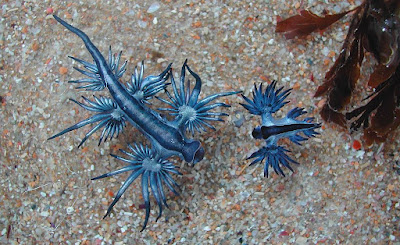kw: book reviews, nonfiction, science, biology, naturalists, natural history, citizen science, cities
When you think of Picnic Guests, what do you imagine? This image probably doesn't come to mind. Ants are the more likely thought. The third chapter of Secret Life of the City: How Nature Thrives in the Urban Wild, by Hanna Bjørgaas (or the fourth if you count a long "Introduction") considers ants. Ants that invade the author's city apartment, ants that drive her to consider chemical warfare. Discussions with a couple of scientists dissuade her, and she simply pays more attention to keeping things clean and outwaits them.In the meantime, she uses a magnifier to get a closer look at one. At 20X, it looks quite fearsome. Ants are well fitted for living in a great many environments. They may be the primary ubiquitous animals. They live on six of the seven continents; none are native to Antarctica (the only insects that live there, in a few coastal areas, are a couple of species of midges that can survive being frozen for half the year). They abound everywhere else, and probably outweigh the sum of all mammals, humans included.
Ms Bjørgaas lives in Oslo, Norway. Her book was translated from Norwegian by Matt Bagguley. The nine titled chapters touch on living things she paid attention to during nine months of the year. She begins the year with crows, the most intelligent birds most of us are likely to encounter. Crows in the city, like many types of city birds, are less skittish around humans than their more rural cousins. They may not be as human-adapted as pigeons—sometimes you almost have to step on a pigeon before it flutters away—but they seem to have a keen sense of how far you can reach, should you be so inclined.In the Introduction, though, which takes place in Antarctica where she worked briefly as a tour guide, her focus is not so much on penguins as on a particular species of lichen that caught her eye. Both crows and lichens appear later in the book also. The November chapter focuses on lichens, and is titled, "The Written Language of the City." This is because, among the great variety of lichen species, some are more sensitive, and others more tolerant of the polluted air of cities, particular when it includes sulfurous (stinky) gases.
This picture shows at least three species of lichen on an old branch, in an area with rather clean air. Using citizen scientists to help collect observations, researchers have developed a "lichen scale" to measure the level of air pollution in and around cities. One may then map concentric rings that surround sources of more egregious stenches such as paper plants (Sixty years ago I remember the smell of paper plants near Newark NJ, which my cousin called "the armpit of New Jersey". It's been cleaned up a bit since then).The author did an experiment in soil fertility. She bought nine pieces of cotton underwear and selected three locations, one in a desiccated city lot, one in a park, and one well outside the city in the forest. In each, she dug three holes and buried a garment a spade-length deep in each hole. Months later, there was nearly nothing left of her "offerings" in the forest, and the parkland holes yielded semi-composted cloth bits. The third location had been paved over since, which demolished that part of the experiment. I expect that the cloth may have been darkened a bit, but would have been otherwise almost unchanged, and I suspect she would agree. That's what others have found.
If you find the spectacle of a woman digging holes in a city park amusing, consider coming across her prone upon the ground, examining the contents of a shallow scrape with a strong magnifier. She did a little of this, as she tells in "August: Stories from Underground". With a bit more discretion, she visited a soil scientist, who showed her the life beneath our feet with a video microscope. A tiny springtail (the size of a comma) was a hideous monster compared to protozoa and other small denizens of the soil. And, of course, it must be said that the number of bacteria in a teaspoonful of soil will typically exceed the entire human population of the earth, perhaps ten times over. Even the dry, sandy soil of a trampled path in a city may contain a billion bacteria per gram.
This book is a delightful contrast to nature books that tend to concentrate on, for example, birds, or beetles, or some other focus. There is room in the concept of "naturalist" for anything living. I wish the book had an index. Still, it is fascinating and it opens one up to some of the variety to be found in any environment, if we will simply slow down and look, and listen, and observe.













